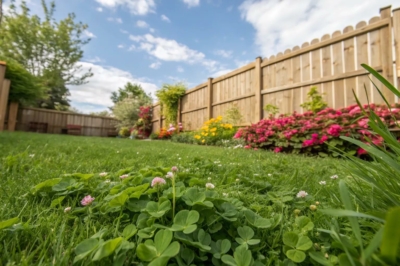1. Eco-Friendly Backyard Design
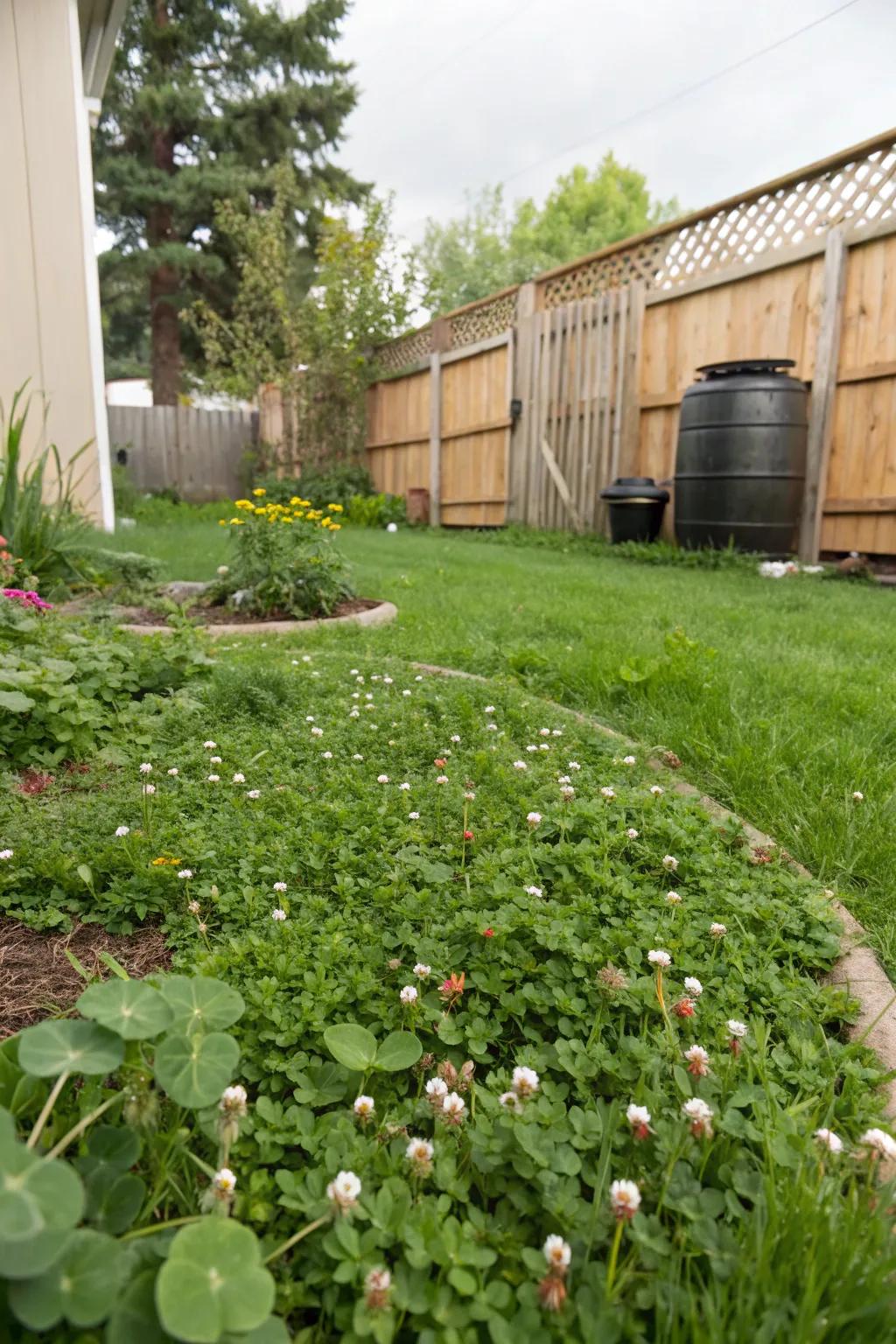
Ditch the chemicals and opt for a clover lawn that enriches the soil naturally. It’s a sustainable choice that supports biodiversity and keeps your garden healthy.
Useful items to consider:
- Clover Lawn Seeds: Transform your yard with clover seeds and promote biodiversity effortlessly in your garden.
- Organic Lawn Fertilizer: Nourish your clover lawn with eco-friendly fertilizer for healthier, greener growth.
- Rain Barrel: Collect rainwater sustainably with a rain barrel to keep your clover lawn hydrated.
2. Clover in Urban Gardens
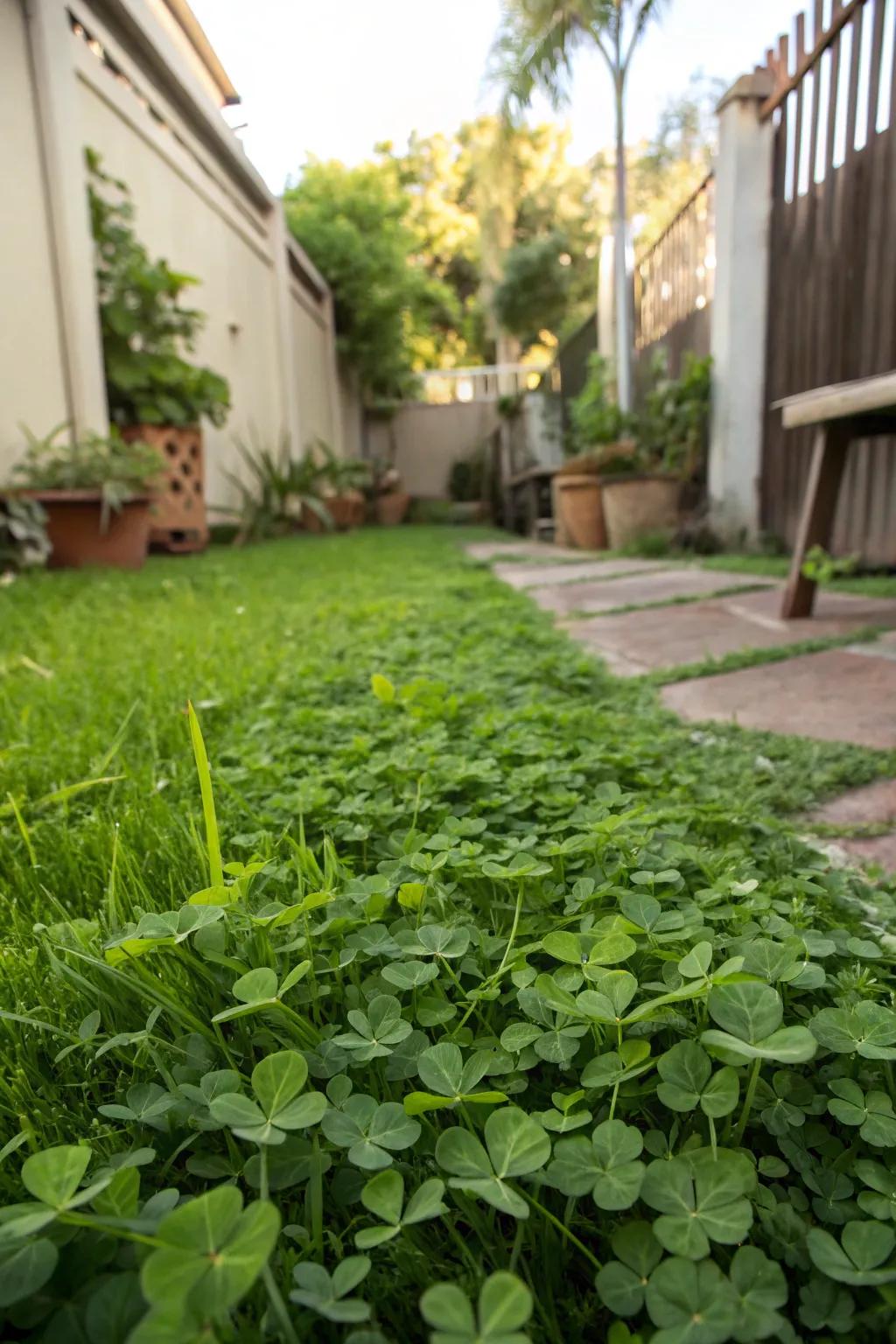
Even in urban settings, clover can thrive beautifully, offering a green escape amidst the concrete jungle while requiring minimal upkeep.
Some ideas to consider:
- Clover Lawn Seed Mix: Transform your urban space by planting clover for a lush, green lawn with minimal maintenance.
- Organic Lawn Fertilizer: Boost your clover’s growth with eco-friendly nutrients, enhancing its rich green color naturally.
- Low-Profile Garden Edging: Define your clover area with stylish garden edging, ensuring a neat and organized urban oasis.
3. Clover for Erosion Control

If your yard is on a slope, consider clover for erosion control. Its dense root system helps keep the soil in place while adding a lush look.
Give these a look:
- Clover Seed Mix for Lawns: Transform your slope with hardy clover seeds, perfect for soil stability and lush growth.
- Erosion Control Fabric: Enhance soil stability with erosion control fabric; ideal to pair with clover planting.
- Liquid Lawn Fertilizer: Boost your clover’s growth with organic liquid fertilizer, promoting a dense and thriving lawn.
4. Clover as a Weed Barrier
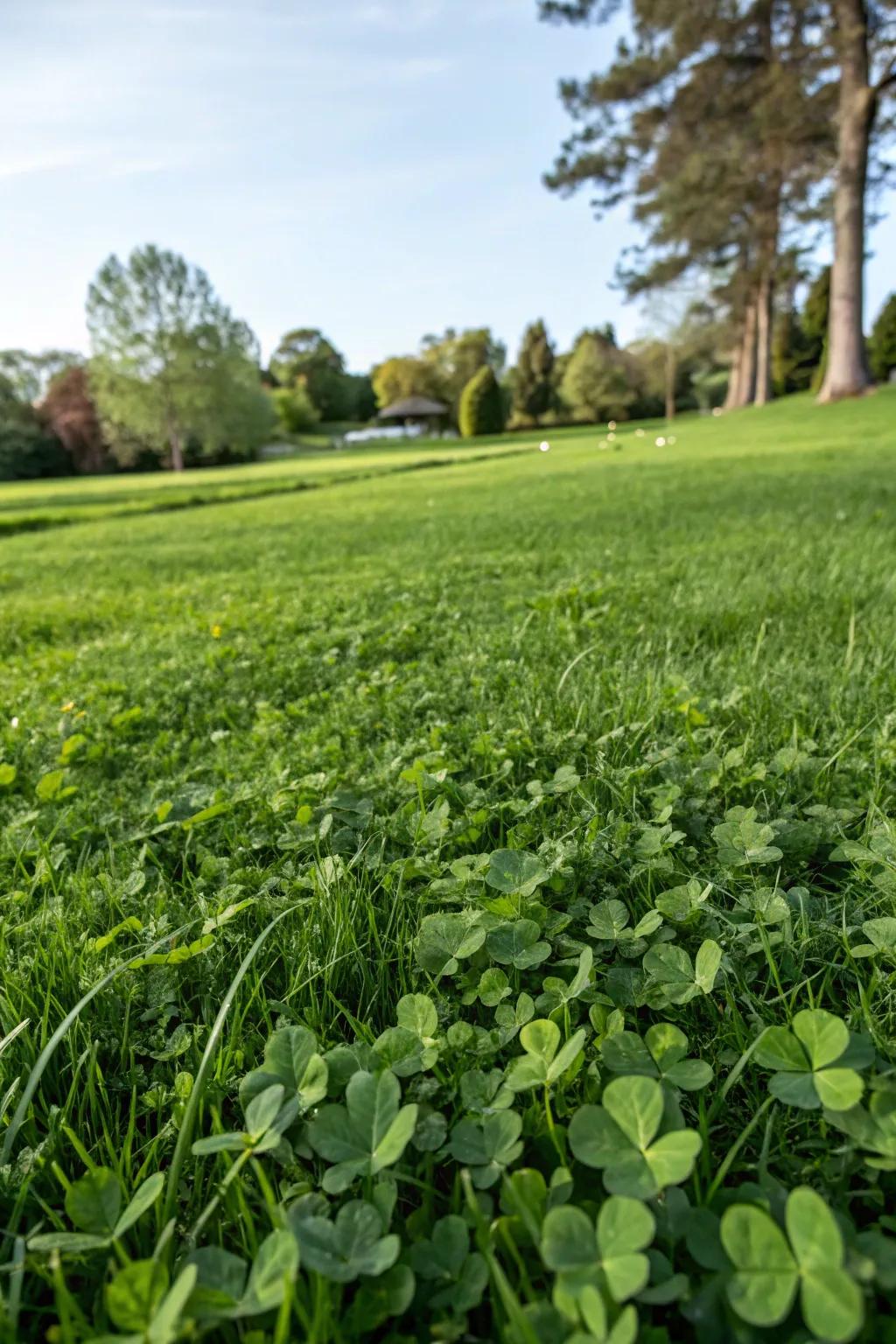
Say goodbye to weeds! Clover naturally chokes out weeds, reducing the need for harsh chemical treatments and keeping your garden pristine.
A few suggestions:
- Clover Seed Mix: Enhance your lawn’s resilience by sowing this clover seed mix for dense, weed-free growth.
- Organic Lawn Fertilizer: Boost clover growth and soil health with this organic fertilizer, enhancing your garden naturally.
- Natural Weed Prevention Mulch: Support clover’s weed control with this natural mulch, maintaining a pristine and eco-friendly garden.
5. Clover Seating Areas
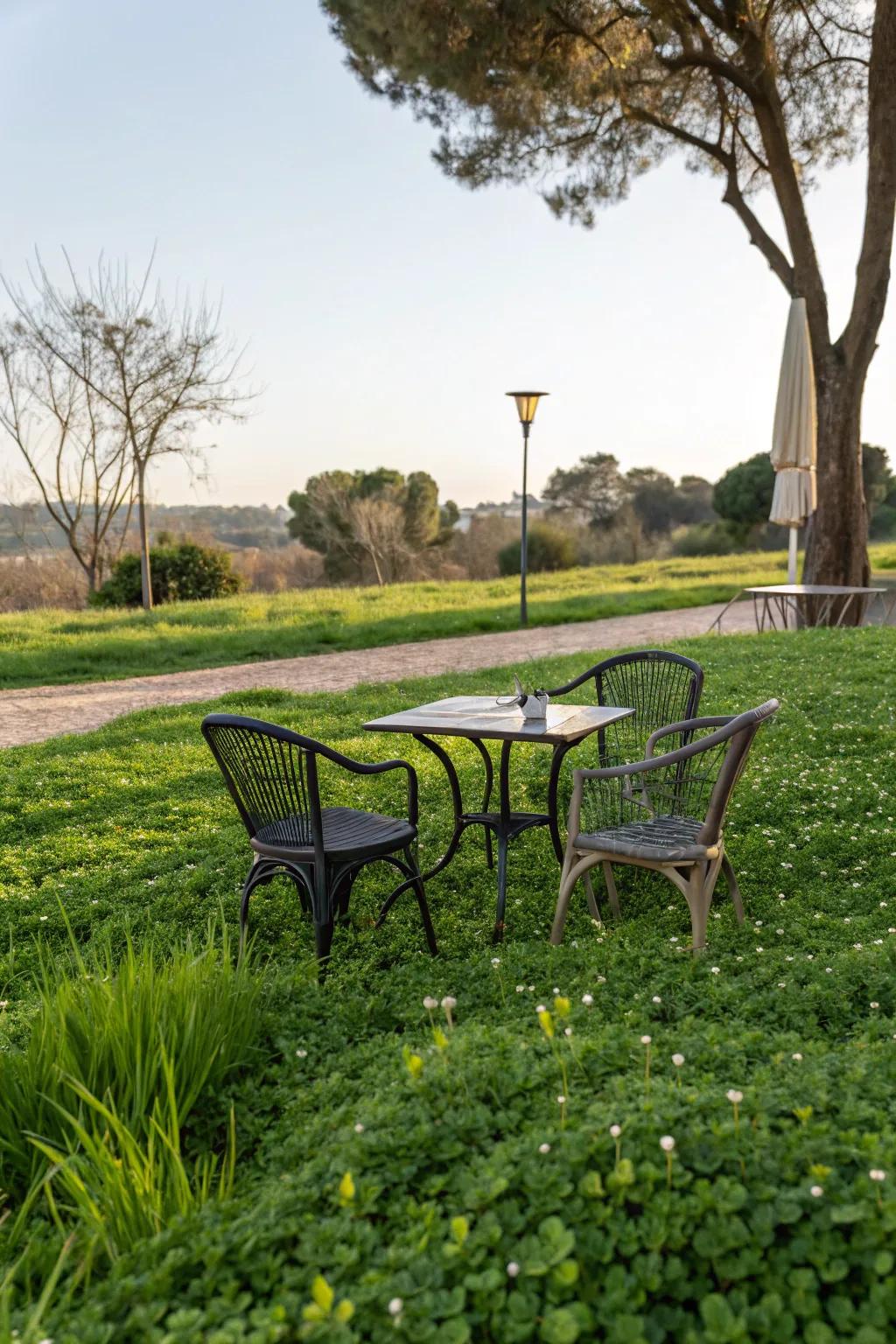
Create a cozy outdoor nook by placing seating areas on your clover lawn. It’s the perfect setting for a peaceful afternoon read or a gathering with friends.
Check if these fit your needs:
- Outdoor Bistro Table Set: Transform your lawn with a stylish bistro table set for cozy outdoor gatherings.
- Garden Patio Umbrella: Enhance comfort with a practical garden umbrella for shade while enjoying your clover lawn.
- Weather-resistant Outdoor Chair Cushions: Add comfort to your seating area with plush, weather-resistant cushions for outdoor relaxation.
6. Clover as a Soft Carpet
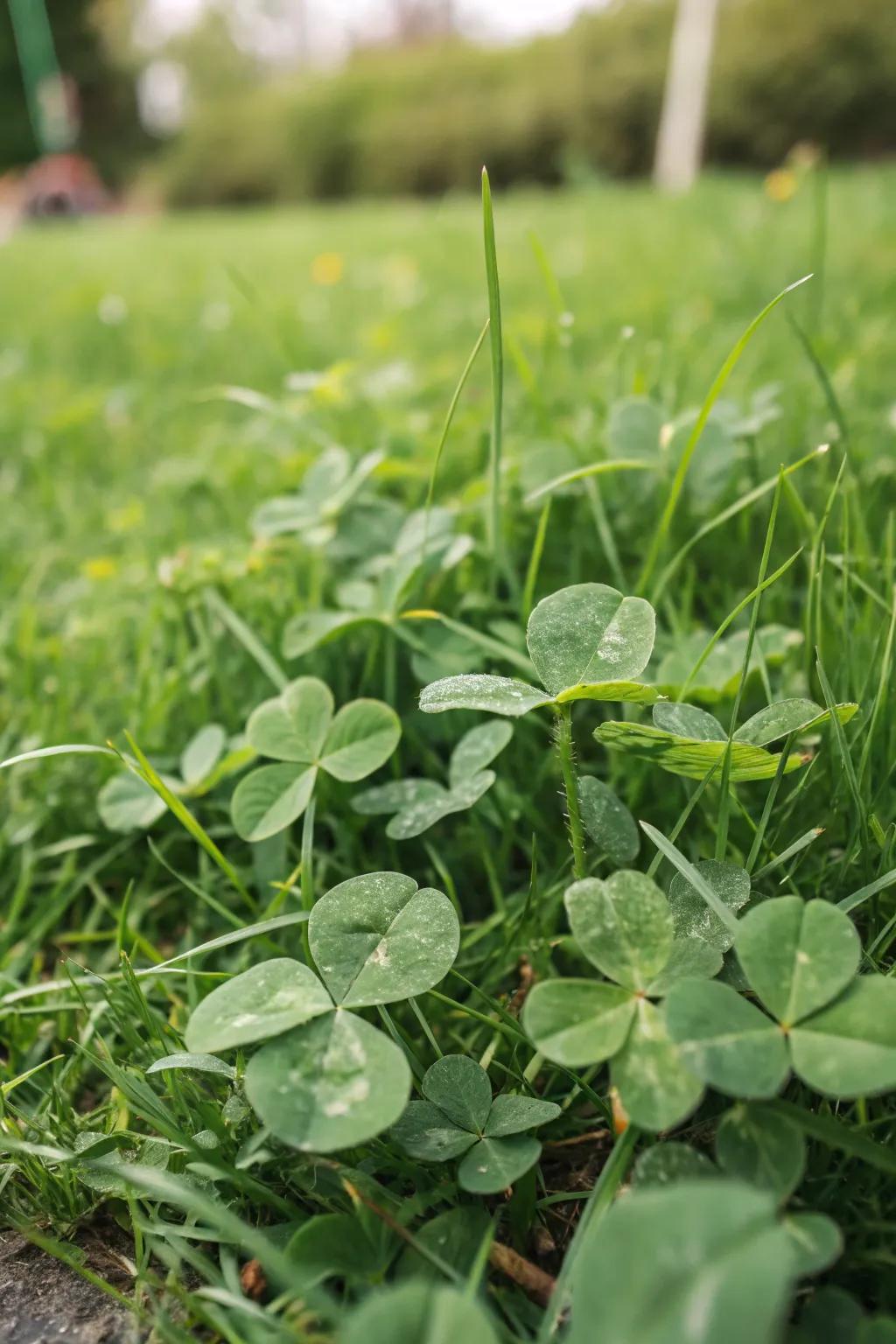
Imagine stepping outside onto a soft, green carpet that feels amazing underfoot. Clover lawns are perfect for providing that plush texture while staying green even in dry spells.
These products might be useful:
- Clover Lawn Seed Mix: Establish an evergreen, plush surface with these easy-to-grow clover seeds for your lawn.
- Organic Lawn Fertilizer: Nourish your clover lawn organically, enhancing growth and vibrancy without harsh chemicals.
- Sprinkler System Kit: Ensure consistent watering for a lush clover lawn with this adjustable sprinkler system kit.
7. Clover with Water Features
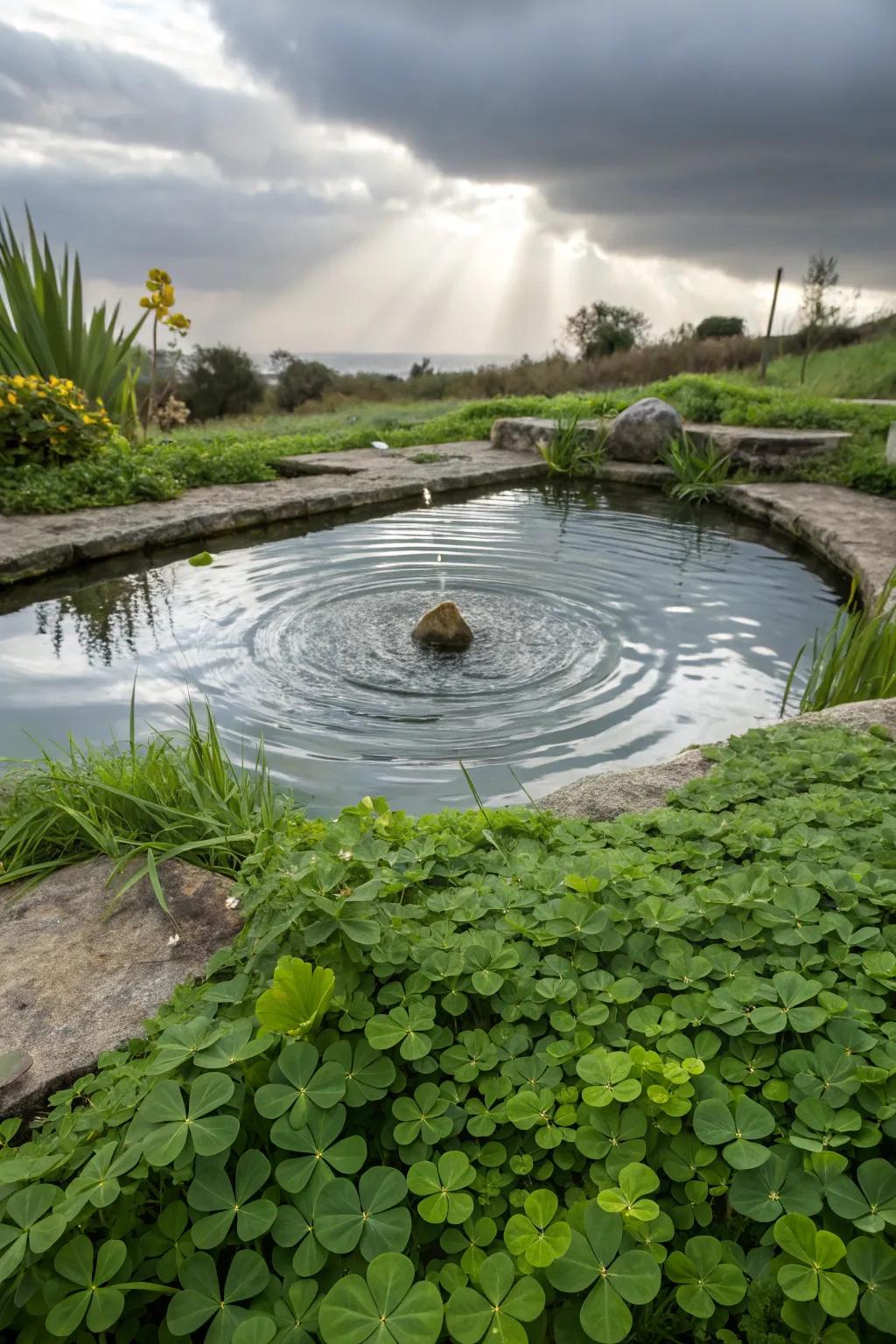
Enhance your water feature by surrounding it with clover. The lush green adds tranquility and contrasts beautifully with the water.
May just do the trick:
- Clover Seed Mix: Enhance your garden’s look and feel with lush clover seed that thrives around water features.
- Water Feature Pump: Add a soothing element to your garden by installing a reliable water feature pump.
- Garden Decorative Stones: Create a natural border around your water area with versatile and attractive garden stones.
8. Clover for Shady Spots
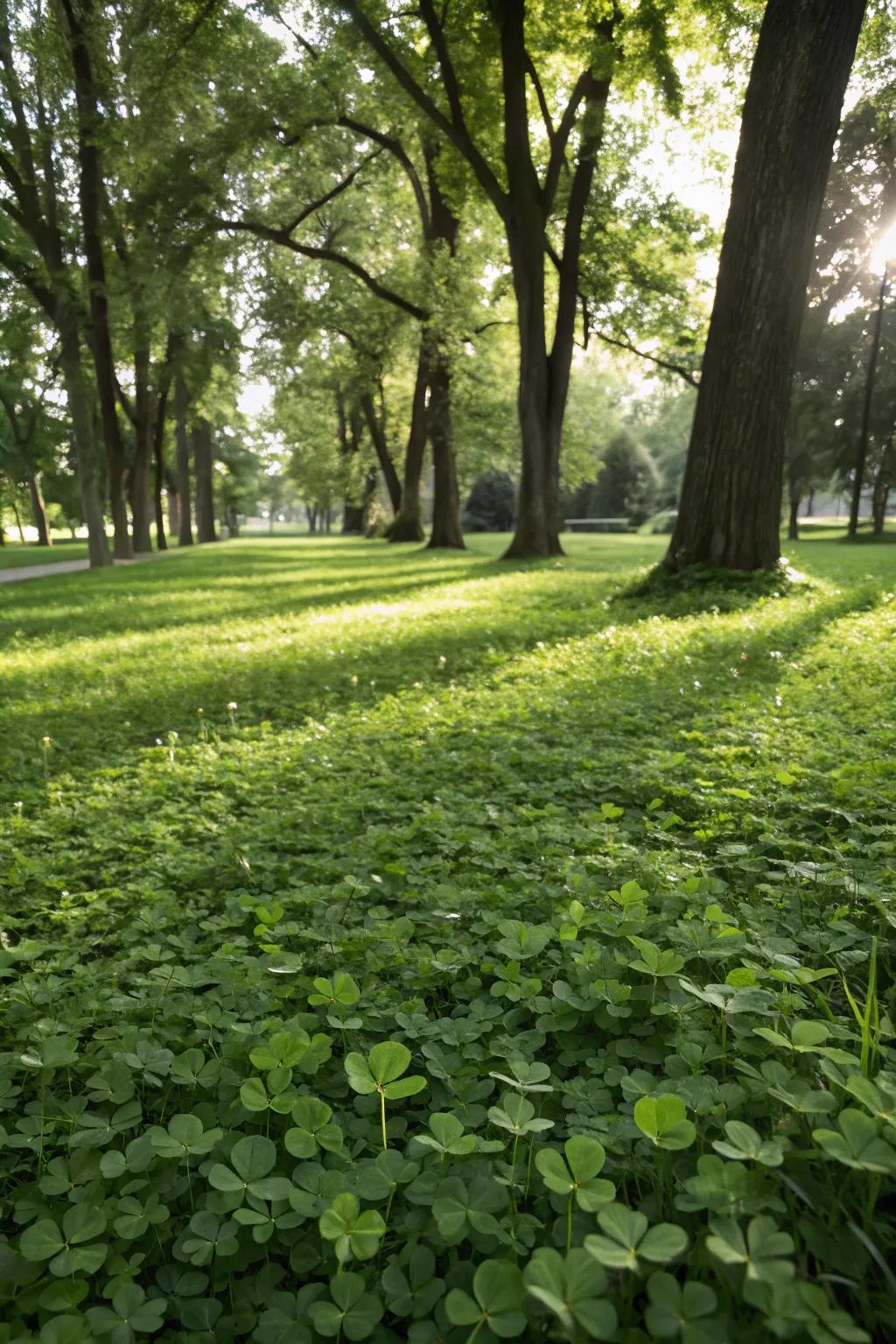
Have a spot in your yard that struggles with grass? Clover thrives in shady areas, making it a resilient option for those tricky spots.
Try these:
- Shade-Tolerant Clover Seed Mix: Transform shady areas with clover seeds designed to thrive where grass struggles.
- Soil pH Tester Kit: Ensure perfect soil conditions for clover with this easy-to-use pH tester.
- Organic Lawn Fertilizer: Boost clover growth in shady spots with environmentally friendly lawn fertilizer.
9. Integrate Clover with Ornamental Grasses
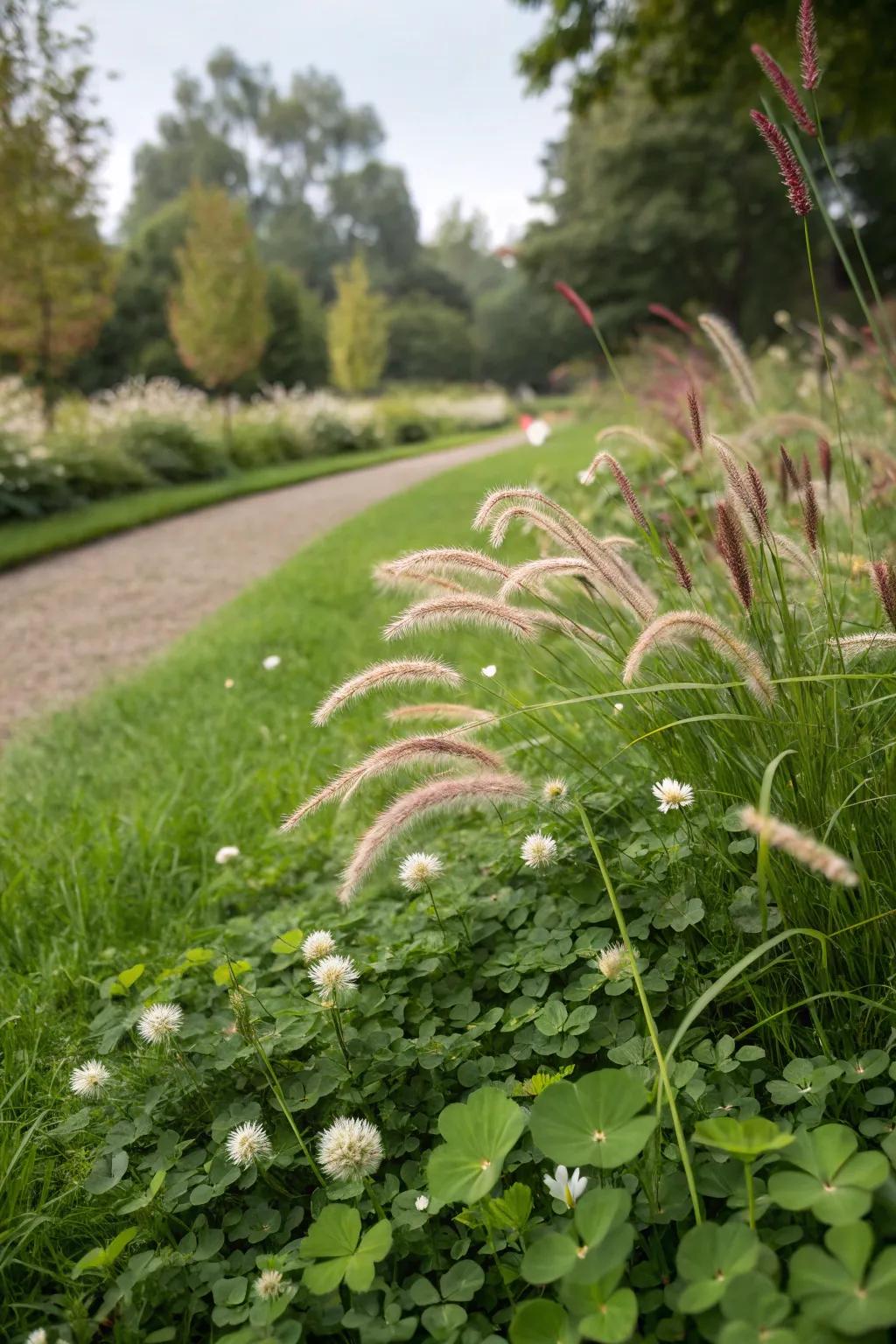
For a modern twist, integrate clover with ornamental grasses. This combination offers texture and movement, creating a dynamic garden landscape.
Check these products out:
- Clover Lawn Seed Mix: Enhance your garden with lush clover, offering a modern and eco-friendly ground cover.
- Ornamental Grass Seed Pack: Add texture and movement with diverse ornamental grasses for a dynamic garden landscape.
- Garden Soil Conditioner: Improve soil health to support the growth of clover and ornamental grasses effectively.
10. Clover with Fruit Trees
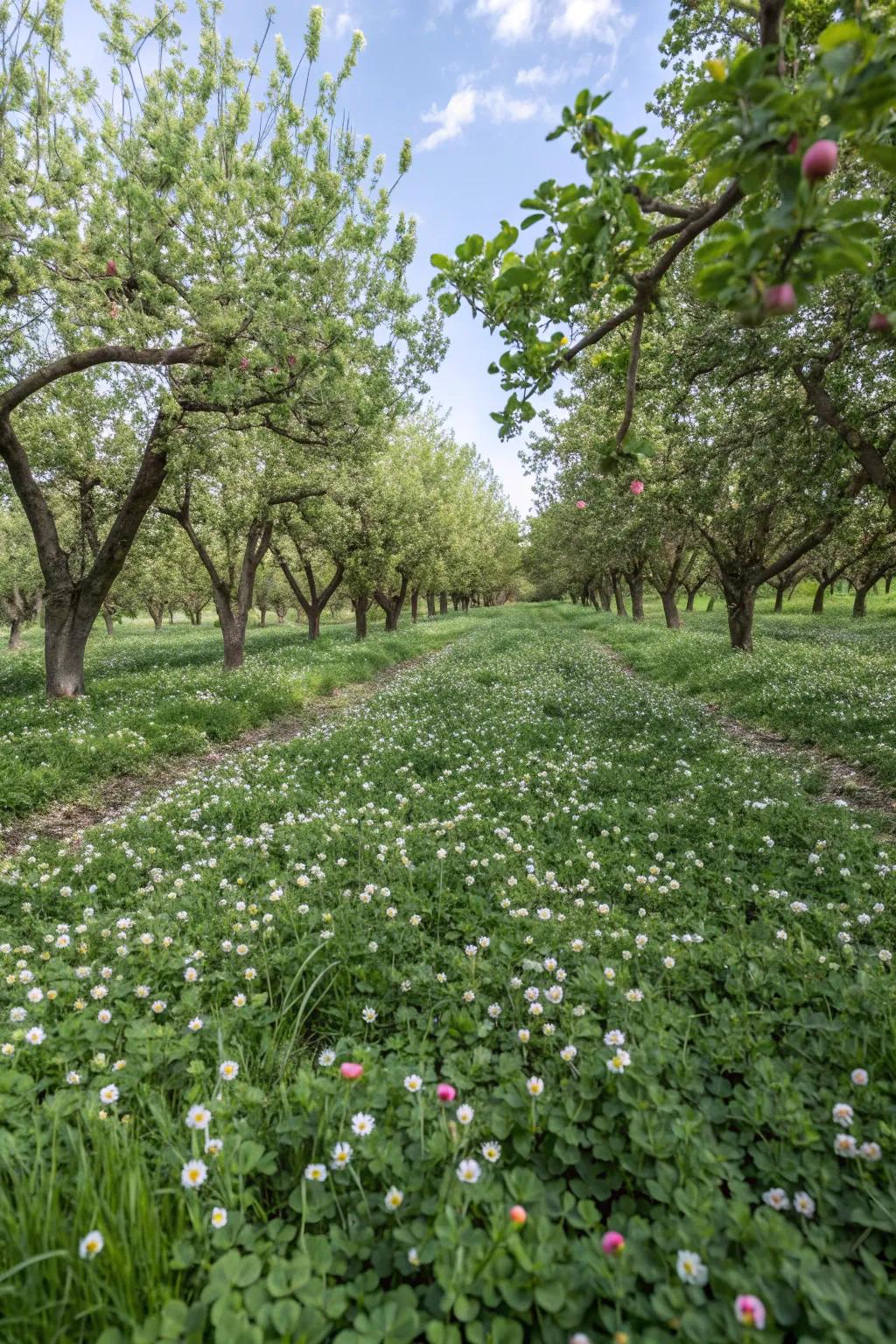
Plant clover under your fruit trees. It enriches the soil and provides a lush, green carpet that complements the trees beautifully.
Possibly helpful picks:
- Clover Seed Mix: Transform your orchard with nutrient-rich clover seed mix. Enhance soil health effortlessly.
- Fruit Tree Fertilizer: Boost your fruit trees’ growth with easy-to-apply, balanced fertilizer for healthier yields.
- Drip Irrigation Kit: Ensure adequate watering for clover and trees with an efficient drip irrigation system.
11. Mix Clover with Wildflowers
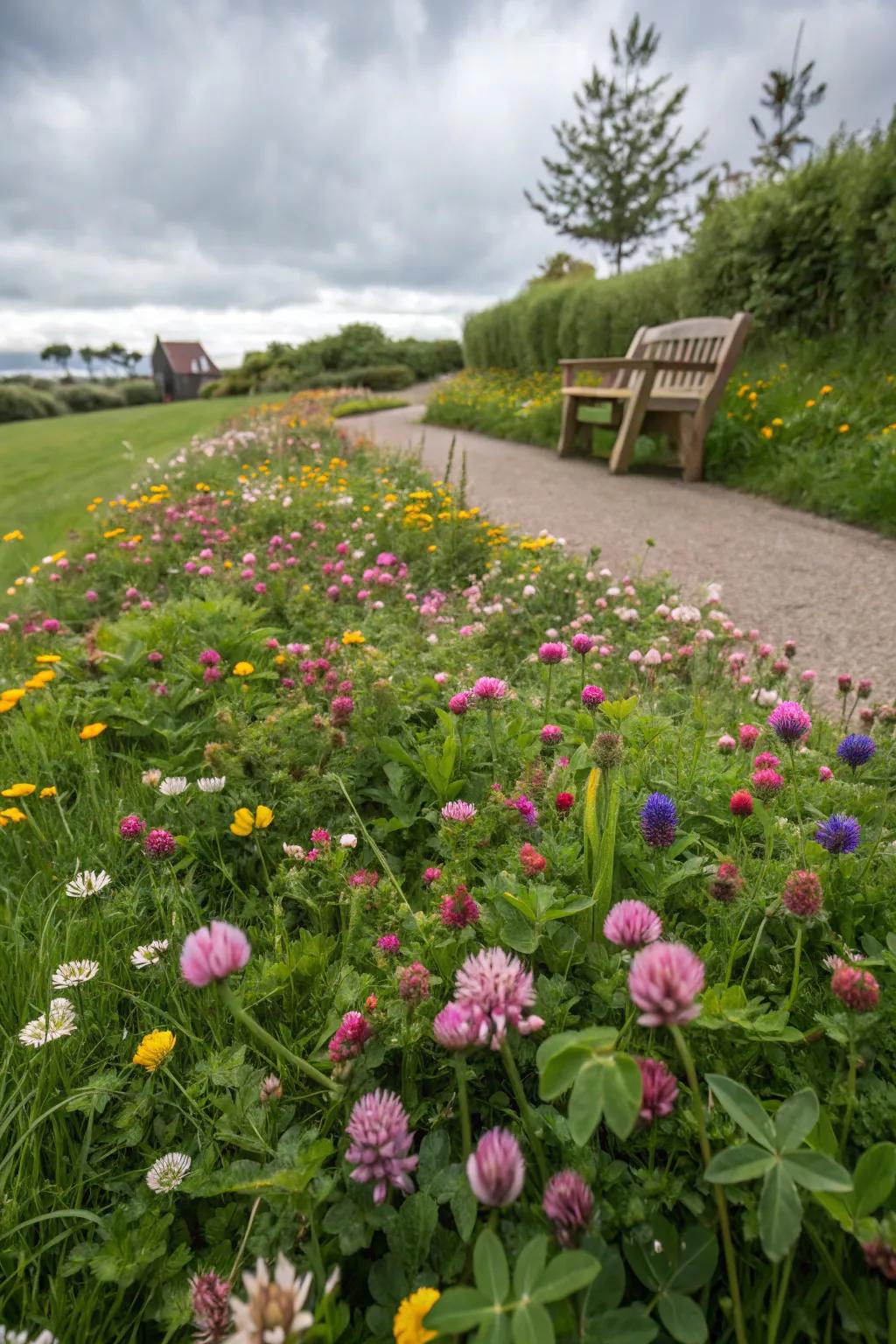
For a splash of color, mix clover with wildflowers. This combination not only adds visual interest but also attracts pollinators, creating a lively garden scene.
Maybe worth checking out:
- Wildflower Seed Mix: Enhance your garden with vibrant wildflowers that attract pollinators and enrich biodiversity.
- Clover Lawn Seed: Create a lush, eco-friendly lawn by planting durable and low-maintenance clover seeds.
- Pollinator Habitat Kit: Support local wildlife by adding attractive elements that invite beneficial pollinators to your garden.
12. Create Clover Pathways
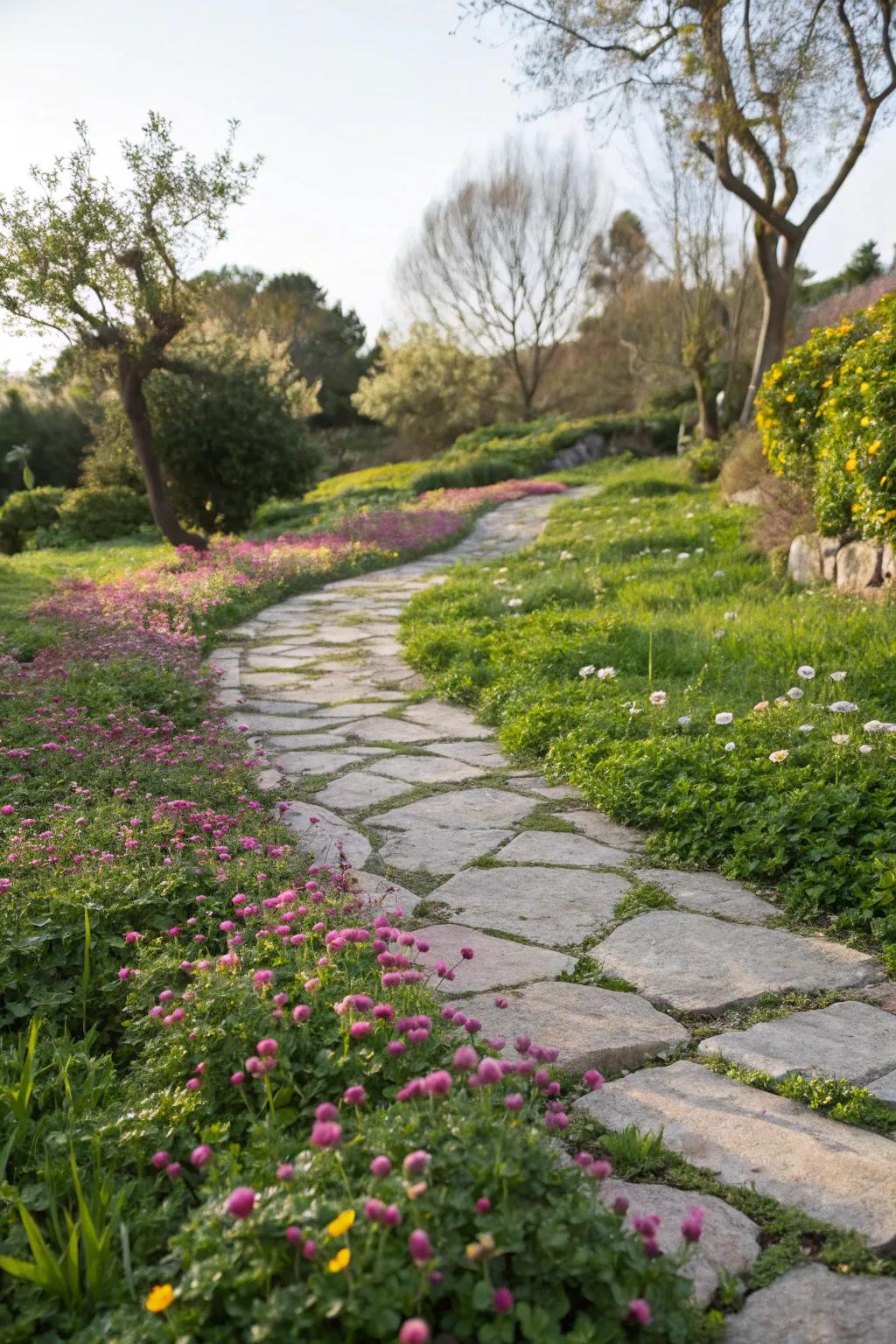
Design charming pathways through your garden using clover paths bordered with stones or wood. It’s a simple way to add structure and guide guests through your green paradise.
You might give these a try:
- Garden Stepping Stones: Enhance your clover pathways by placing these durable stepping stones for an elegant garden journey.
- Decorative Garden Edging: Define your clover paths beautifully with easy-to-install decorative garden edging options.
- Clover Lawn Seed Mix: Grow lush, eco-friendly clover pathways by planting a premium clover lawn seed mix.
13. Clover for Cottage Gardens
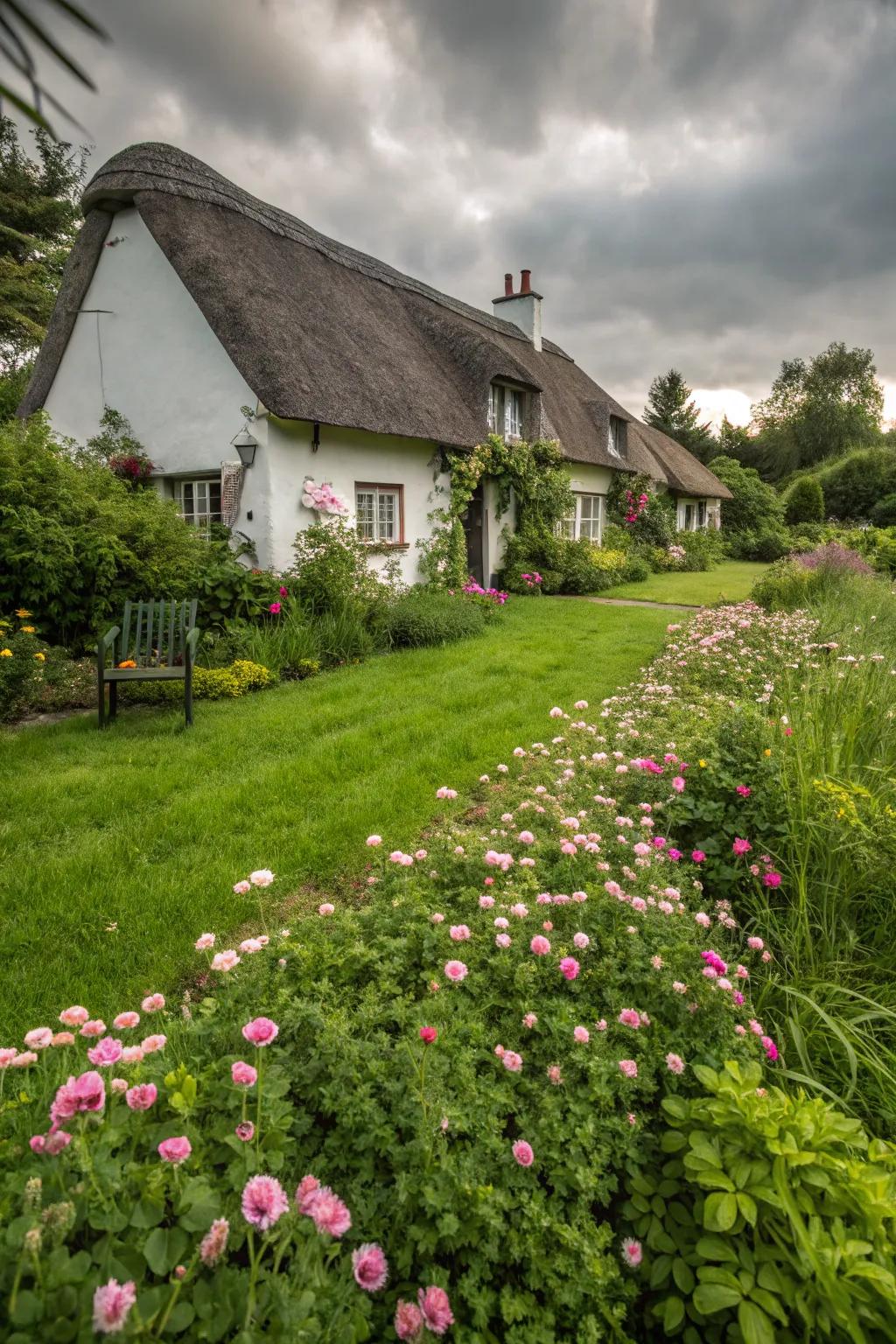
Add a touch of whimsy to your cottage garden with a clover lawn. Its natural charm fits perfectly with traditional and rustic garden styles.
Possibly handy products:
- Clover Seed Mix: Enhance your garden with a lush clover lawn. Perfect for that rustic, cottage charm.
- Garden Soil Test Kit: Ensure your clover thrives by testing soil quality. Achieve optimal growth effortlessly.
- Ergonomic Garden Tools Set: Tend to your clover lawn comfortably using this ergonomic garden tools set. Ideal for any gardener.
14. Clover in Rock Gardens
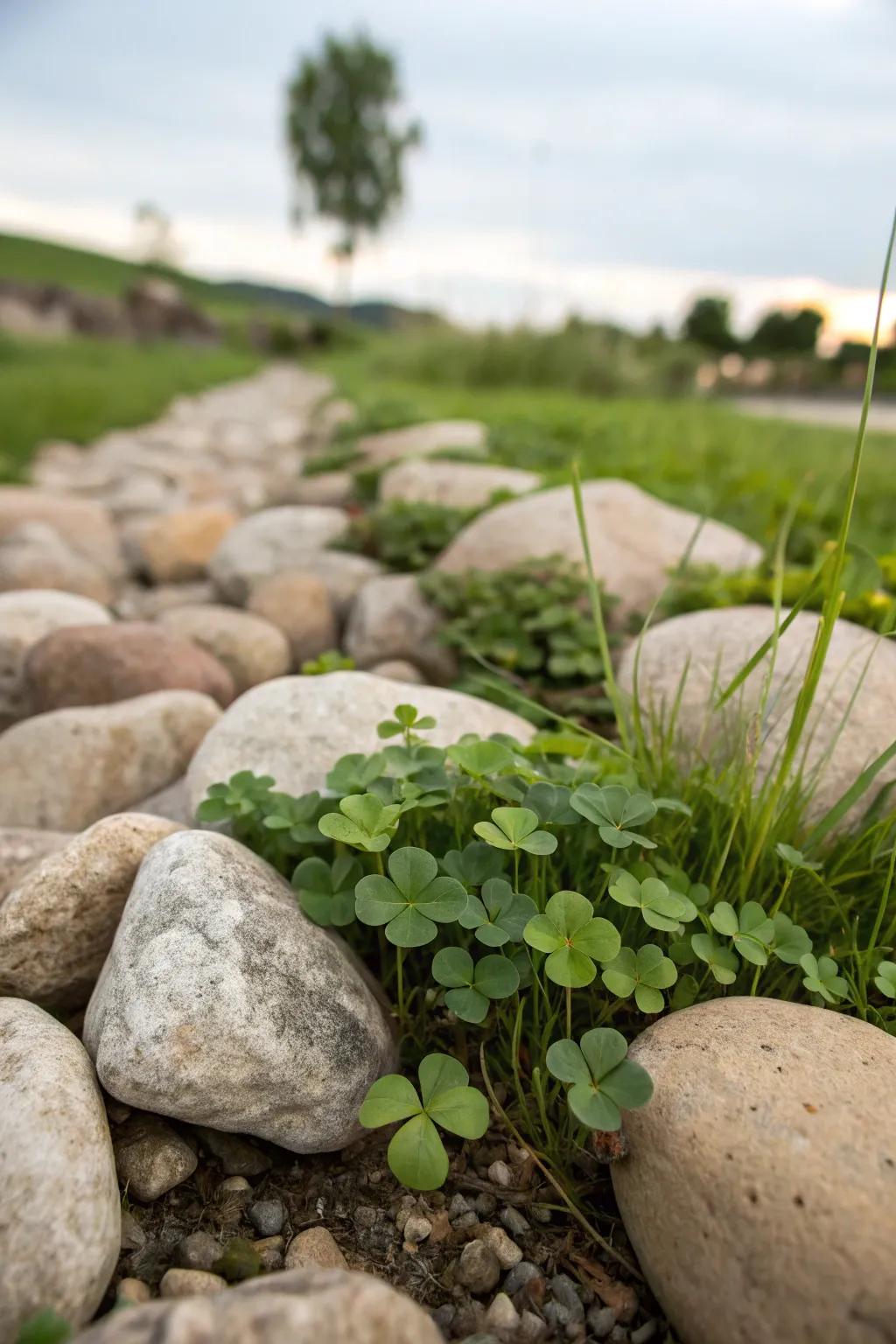
Add a touch of greenery to your rock garden with clover. It softens the harshness of rocks and adds life to the landscape.
You might like:
- Clover Seed Mix: Create a lush green layer in your rock garden with easy-to-plant clover seed mix.
- Garden Weed Barrier Fabric: Protect your clover garden by reducing weeds with durable garden weed barrier fabric.
- Rock Garden Soil Mix: Enhance clover growth in your rock garden with specially formulated rock garden soil mix.
15. Clover in Zen Gardens
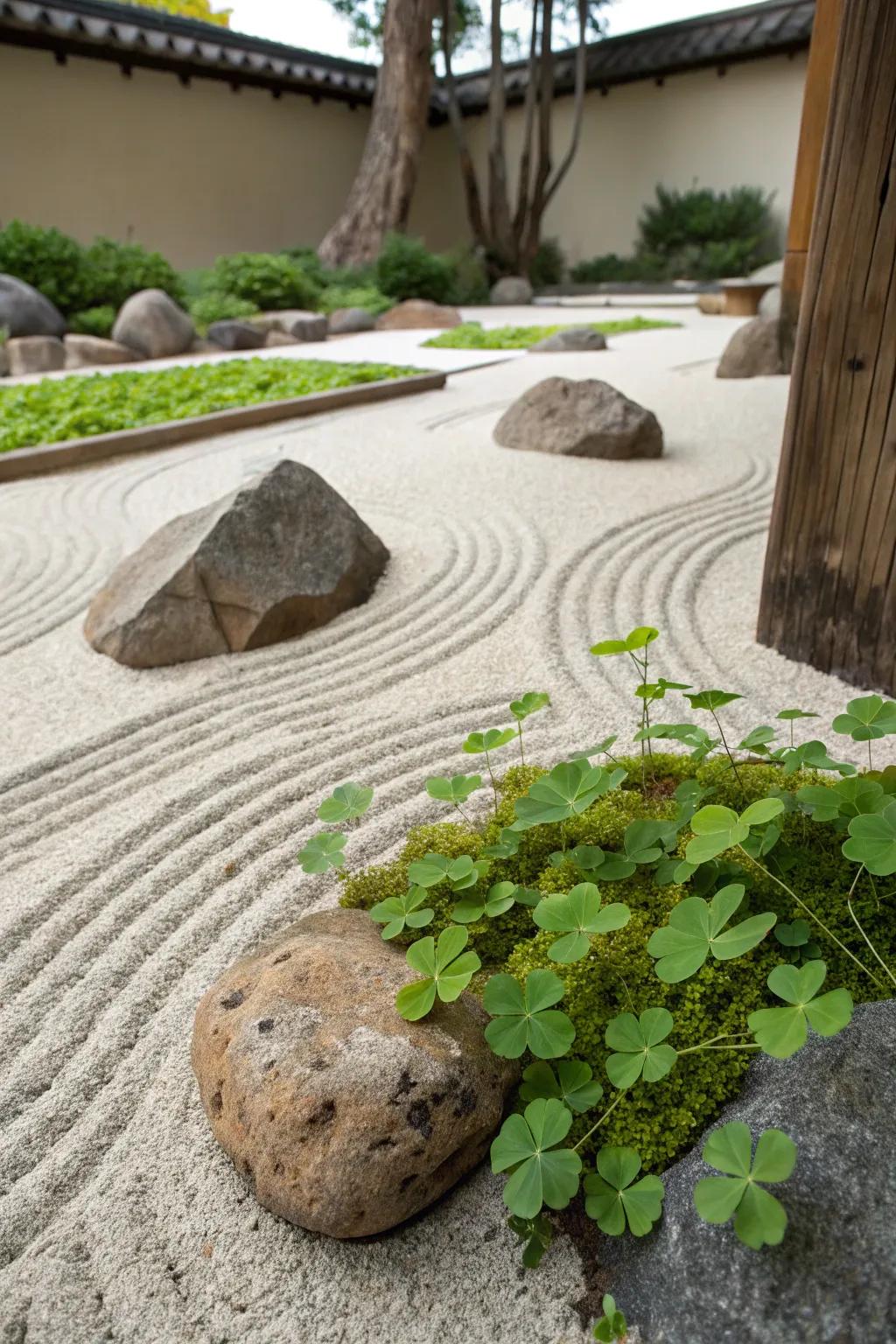
Incorporate clover into your Zen garden for a soft, green contrast against the raked gravel and stones, creating a peaceful retreat.
Items that may come in handy:
- Clover Seeds for Gardens: Enhance tranquility with lush green clover, perfect for any serene Zen garden setting.
- Japanese Zen Rake Set: Achieve intricate sand patterns with this essential Zen rake, perfect for peaceful surroundings.
- Natural Garden Stone Assortment: Create an authentic garden layout using assorted natural stones, adding harmony to the space.
16. Clover with Edible Gardens
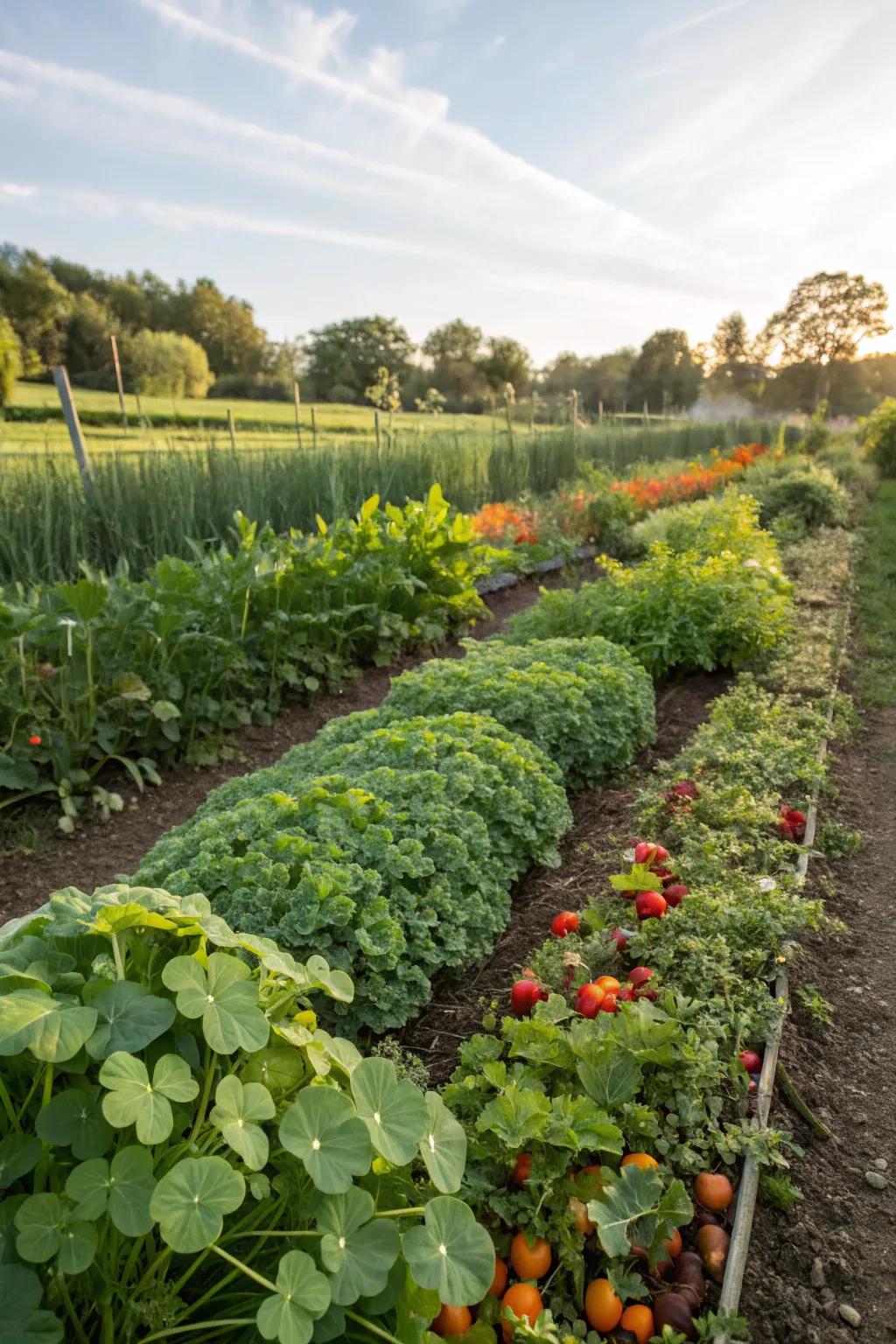
Surround your vegetable beds with clover. It adds nitrogen to the soil, benefiting your veggies while keeping the garden looking neat.
A few relevant products:
- Clover Seed Mix: Enhance your garden with clover seeds, enriching soil and beautifying your vegetable beds.
- Garden Bed Edging: Define your vegetable beds with durable edging for a tidy and organized garden layout.
- Organic Fertilizer: Support your vegetables with organic fertilizer, promoting healthy growth and vibrant produce.
